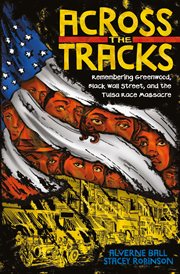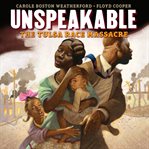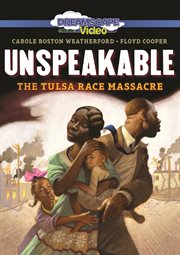Across the tracks Remembering Greenwood, Black Wall Street, and the Tulsa Race Massacre
eBook - 2021
One hundred years after the Tulsa Race Massacre, Across the Tracks is a celebration and memorial of Greenwood, Oklahoma In Across the Tracks: Remembering Greenwood, Black Wall Street, and the Tulsa Race Massacre, author Alverne Ball and illustrator Stacey Robinson have crafted a love letter to Greenwood, Oklahoma. Also known as Black Wall Street, Greenwood was a community whose importance is often overshadowed by the atrocious massacre that took place there in 1921. Across the Tracks introduces the reader to the businesses and townsfolk who flourished in this unprecedented time of prosperity for Black Americans. We learn about Greenwood and why it is essential to remember the great achievements of the community as well as the tragedy which ...nearly erased it. However, Ball is careful to recount the eventual recovery of Greenwood. With additional supplementary materials including a detailed preface, timeline, and historical essay, Across the Tracks offers a thorough examination of the rise, fall, and rebirth of Black Wall Street.
- Subjects
- Genres
- Electronic books
Graphic novels
Comic books, strips, etc - Published
-
[United States] :
Abrams
2021.
- Language
- English
- Corporate Author
- Main Author
- Corporate Author
- Other Authors
- Online Access
- Instantly available on hoopla.
Cover image - Physical Description
- 1 online resource
- Format
- Mode of access: World Wide Web.
- Audience
- Rated M
- ISBN
- 9781647003401
- Access
- AVAILABLE FOR USE ONLY BY IOWA CITY AND RESIDENTS OF THE CONTRACTING GOVERNMENTS OF JOHNSON COUNTY, UNIVERSITY HEIGHTS, HILLS, AND LONE TREE (IA).
Review by Publisher's Weekly Review



